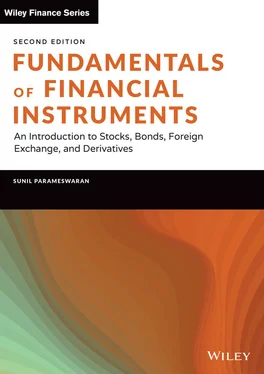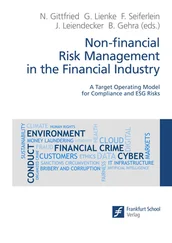Besides, for an issuer of claims, the cost of a public issue can be high. Such issues require a prospectus and application forms to be printed and also require aggressive marketing. This is obviously not cheap. The investment banker has to be paid his fees, which can be substantial in practice. Finally, the issuing firm needs to hire other professionals like lawyers, CPAs, and public relations firms, whose services will also have to be paid for.
As we have discussed, companies that issue financial claims directly to the public find that many potential investors find the denomination and/or maturity of the securities offered to be unsuitable. Financial intermediaries, however, are able to resolve these issues, for they have the ability to invest relatively large amounts and for long periods of time. This is despite the fact that for a depository institution such as a bank, the average deposit may not be for a very large amount, and most deposits tend to be for relatively short periods. We say that such intermediaries are able to perform denomination transformation and maturity transformation.
Intermediaries like banks are able to effect such transformations because they sell their own claims to the public and, after pooling the funds so garnered, purchase financial claims from the borrowing entities. A large commercial bank will have many depositors ranging from those who deposit a few dollars to those who deposit a few million dollars. Similarly, a mutual fund will have investors ranging from those who seek to buy 100 shares to those seeking to acquire 100,000 shares. Since these institutions cumulatively receive funds on a large scale, they can profitably transform the relatively smaller amounts deposited with them into large loans for commercial borrowers. This is the essence of denomination transformation.
As mentioned earlier, most borrowers prefer to borrow long-term due to the nature of the projects they are executing. Lenders, on the contrary, like relatively short-term liquid assets that can be converted to cash on demand. Banks can pool short-term deposits and package them into medium- to long-term loans. They are in a position to do so because the deposits will periodically get rolled over, either because of renewal by existing depositors or on account of new depositors. Similarly, in the case of an open-ended mutual fund, share redemptions during a given day will be accompanied by fresh investments by either existing or new investors.
Financial intermediaries in the indirect market are also able to provide their depositors with risk management and risk diversification. All rational investors dislike risk and are said to be risk averse. This does not, however, mean that people will not take risks while investing. For, after all, every financial market transaction is fraught with a degree of risk. It is just that the magnitude varies from transaction to transaction and from instrument to instrument. The term risk aversion connotes that, for a given level of expected return, an investor will prefer that alternative that has the least risk associated with it. Put differently, while considering an investment in assets with the same degree of associated risk, an investor will choose the security that has the highest expected return. Alternatively, if the choice is between two assets with the same expected return, the investor will choose the one that has lower risk.
Intermediaries like banks have considerable expertise in dealing with risk as compared to individual investors. Thus, investors who lend indirectly through a bank can be assured that their funds will be deployed by the bank after doing a more thorough evaluation of the credit worthiness of the borrower than what they themselves could have done had they chosen to lend directly.
There is another dimension to the role played by banks from the standpoint of risk. We have already discussed the principle of diversification. That is, it is optimal to hold one's wealth in a portfolio of securities. However, in reality it is not easy for an individual investor to construct a well-diversified portfolio. Most individual investors will have a relatively small corpus of funds at their disposal and extensive diversification will be neither feasible nor cost-effective considering the magnitude of transactions costs that they are likely to incur. An intermediary like a bank has a large pool of funds at its disposal and therefore invests across a spectrum of projects from the standpoint of risk. Thus, depositors are assured that every dollar they deposit is effectively being lent to multiple borrowers, thereby ensuring diversification.
Financial intermediaries are also able to derive substantial economies of scale. That is, their fixed costs of operation get spread over a vast pool of transactions and assets. They are therefore able to ensure that they are relatively cost-efficient, and this benefit will be passed on to the depositors to a degree. We will illustrate the concept of economies of scale with a simple illustration.
Take the case of a business operation that costs $5,000 to mount and $2.50 per unit that is processed. If 2,000 units were to be processed, the cost per unit would be $5. If the number of units processed were to be 20,000, however, then the cost per unit would be only $2.75. Of course, the cost per unit cannot be reduced beyond a limit. This is because as the production volume increases, at a point in time the fixed costs will have to be incurred again, for a given production structure can support output only up to a point.
MONEY AND CAPITAL MARKETS
One of the ways of classifying financial markets is based on the original term to maturity of the financial claims that are traded. The market in which instruments with one year or less to maturity are traded is called the money market, whereas the market in which medium- to long-term instruments are traded is called a capital market. Obviously, all money market securities have to be debt securities since equity shares never mature. Capital market securities can be equity securities or medium- to long-term debt securities.
The two markets differ fundamentally from the standpoint of their roles in a market economy. Money markets provide a means for economic agents to adjust their liquidity positions. As we discussed at the outset, every economic agent will receive some form of income in a financial year and also incur some form of expenditure; however, for any economic unit, it will rarely be the case that cash inflows and outflows are perfectly matched with respect to their timing. The mismatch between inflows and outflows leads to short-term deficits and surpluses, which are bridged by borrowing and lending in the money market.
Consider the case of a government. Revenue comes primarily in the form of taxes and is lumpy in nature. However, expenses are incurred on a daily basis. Consequently, if the government were to have a budget surplus, which is rare in practice, for most governments have budget deficits, during most of the year there will be a deficit. Consequently, governments need to constantly borrow to meet the shortfalls. Similarly, a business may have a substantial profit in a financial year but may have a cash deficit on most days. Thus, it would need to borrow periodically to bridge the shortfall.
A capital market, on the other hand, performs a very different economic function. The purpose of a capital market is to channelize funds from people who wish to save to those who wish to make long-term investments in productive assets in an effort to earn income. Thus, when a government or a municipality needs to finance developmental activities that are long-term in nature, such as building a metro railway or putting up an oil refinery, or when a business wants to expand or diversify, it will approach the capital market for the required funds.
Читать дальше












